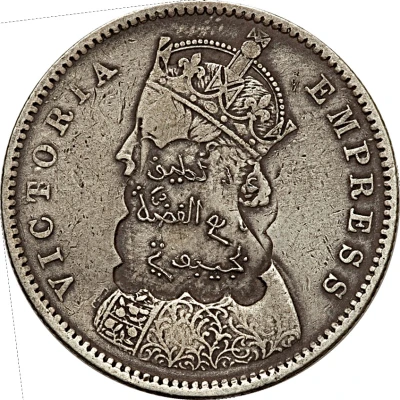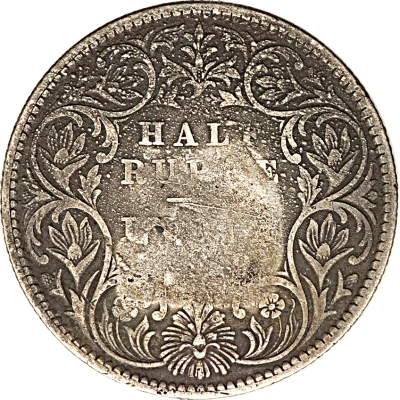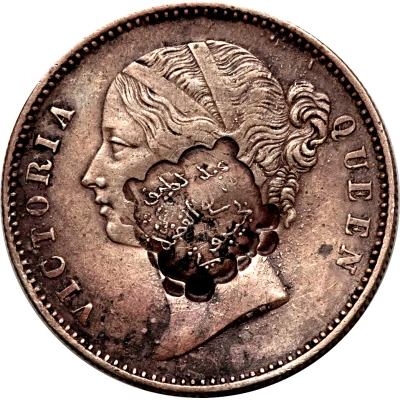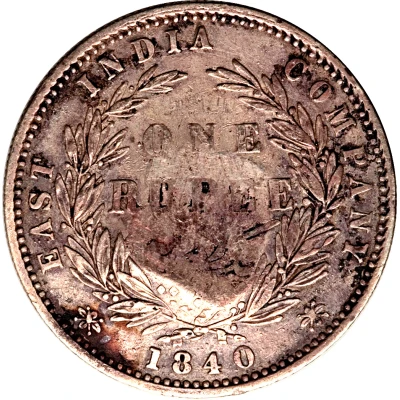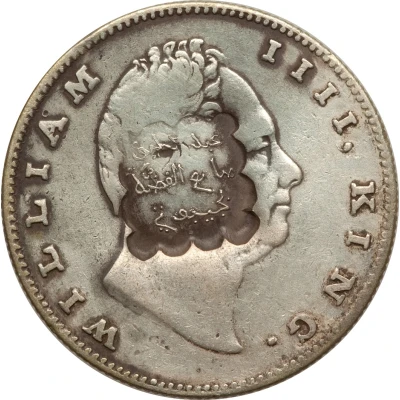
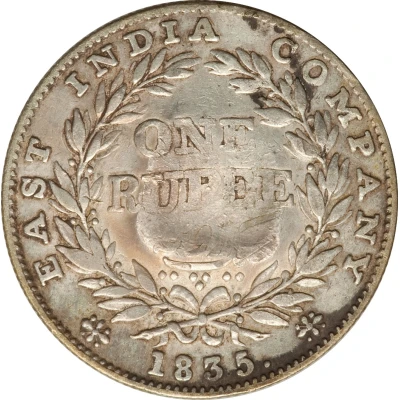

© Heritage Auctions
Indian Rupee counterstamped William IV ND
| Silver (.917) | 11.66 g | 30.5 mm |
| Issuer | Djibouti › Obock Territory (1862-1896) |
|---|---|
| Period | French Protectorates (1884-1896) Second French Colonial Empire (1896-1946) |
| Type | Standard circulation coin |
| Years | 1892-1914 |
| Value | 1 Rupee |
| Currency | Indian Rupee (1885-1943) |
| Composition | Silver (.917) |
| Weight | 11.66 g |
| Diameter | 30.5 mm |
| Shape | Round |
| Technique | Counterstamped, Milled |
| Orientation | Medal alignment ↑↑ |
| Demonetized | Yes |
| Updated | 2024-10-04 |
| Numista | N#143501 |
|---|---|
| Rarity index | 92% |
Reverse
Value in English and Urdu (Yek Rupiya) within a wreath made of 2 branches tied at their base by a ribbon. English legend outside the wreath and date below.
Scripts: Latin, Urdu
Lettering:
EAST INDIA COMPANY
ONE RUPEE
یک روپیہ
1835.
Edge
Milled
Comment
In 1862 French merchants bought Obock, a little harbour on the Red Sea. In 1868, shipowners from Marseille settled in Tadjoura gulf. These territories were then sold to the French government in 1884 and this latter extended its protectorate over all this desertic region which sole advantage of was its strategic position after the Suez Canal being bored. In 1896, Obock, Tadjoura, Damakil and Somali territories became the French Somaliland which capital of is Djibouti. Before WW1, foreign coins were mostly circulating in this territory. Indeed, metropolitan coins were legal tender, but they were too scarce. On November 21st 1885, this obliged Commandant Lagarde to enact an order giving legal tender to and to British India and (in the reign of Victoria).Here, the counterstamp is engraved over a William IV Rupee.
Interesting fact
One interesting fact about this coin is that it was counterstamped with the image of William IV, who was the King of the United Kingdom from 1830 to 1837. This suggests that the coin was issued during a time when Djibouti was under British influence or control.
